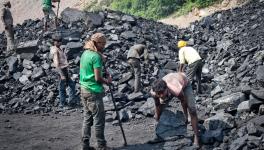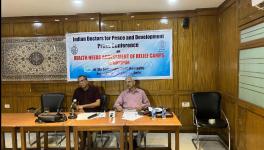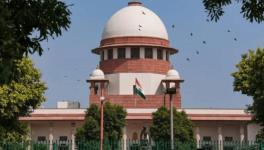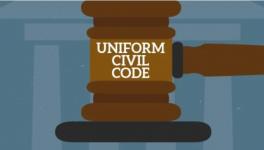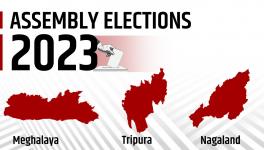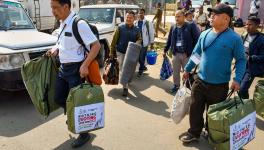Sovereignty, Integration and the Naga Peace Process
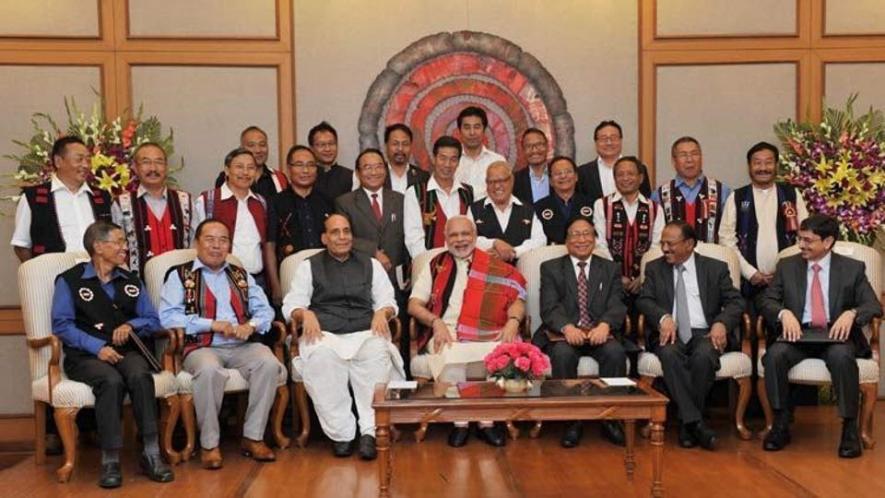
Trouble may be brewing in Nagaland as the National Socialist Council of Nagaland (Isak – Muivah) (NSCN(IM)) has hit out against the Chief Minister's comments on integration. This is not to mention the elephant in the room, the National Socialist Council of Nagaland (Khaplang) (NSCN(K)) who has been making its presence felt with sporadic attacks on the Assam Rifles. The other aspect is that the NSCN(K) is also in an alliance with other rebel groups in the region under the aegis of the United National Liberation Front of Western South East Asia (UNLFW). The million dollar question here is whether the Naga movement would make a return to the bad old days.
Also Read: The Complexities of the Elusive Final Agreement
On June 13, the Chief Minister of Nagaland, Neiphiu Rio had stated that integration of Naga-inhabited areas of neighbouring states was out of the question. Considering that the NSCN(IM) had dropped demanding Naga sovereignty in exchange for integration, the group has predictably lashed out at Rio and accused him of acting against the interests of the Naga cause. The NSCN(IM) had earlier also lashed out against the Union Minister of State for Home, Kiren Rijiju for similar statements. Naga integration is an emotive issue. The demand is premised on the fact that the boundaries, drawn between India and Myanmar, as well as the present day boundaries of the Nagaland state, are illogical and have split the Naga people across many different jurisdictions. Integration of these areas under one jurisdiction is the perceived remedy to the Naga's problem. However, the Naga people are not actually 'disintegrated' in terms of social contacts and mobility, though they may be so when one looks at the lines on a map.
Also Read: Is the Naga Accord Actually 'Almost Finalised'?
The irony of the NSCN(IM)'s stand on Naga integration is that the possibility of integration was contained in one of the clauses of the 16 Point Agreement signed between the Government of India and the Naga People’s Convention in July 1960. The Article 13 of the Agreement concerned the 'consolidation of contiguous Naga areas'. It states that “[t]he delegation wished the following to be placed on record: “The Naga leaders expressed the view that other Nagas inhabiting contiguous areas should be enabled to join the new state. It was pointed out to them on behalf of the Government of India that Article 3 and 4 of the Constitution provided for increasing the area of any state, but it was possible for the Government of India to make any commitment in this regard at this stage”.
What this now represents is that once the demand for sovereignty was dropped, the NSCN(IM) chose to negotiate on a demand that had already been partly conceded to the Naga people. Which then begs the question, what was their movement all about? Rio later responded to the rebel rebuke stating that he was only reiterating what the Union Government told him and that those were not his thoughts. This now shows that the Union Government is going back on its word. However, regardless of the complexities in shifting goal posts, the problem at present for all the negotiating parties is the NSCN(K).
The Union Government is probably aware that the peace talks will have no bearing on resolving the conflict unless the NSCN(K) is also a party. However, the NSCN(K), at present, appears to be caught up in its own commitments to the other groups comprising the UNLFW. The organisation exists as a consortium of rebel groups, comprising of the United Liberation Front of Asom (Independent) (UFLA(I)), the National Democratic Front of Bodoland (Songbijit) (NDFB(S)) and the Kamatapur Liberation Organisation (KLO), and receives outside support from the Coordination Committee (CorCom) – a grouping of valley based Manipuri organisations. While Shangwang Shangyu Khaplang was alive, he was not only the head of the NSCN(K) but the UNLFW as well. Now the mantle has been passed on to his successor in the NSCN(K), Khango Konyak. Unlike Khaplang who was a 'Burmese' Naga, Konyak is from Mon district, Nagaland. On one hand, this is an advantage for the Union Government as they can negotiate with Konyak more freely since he is an 'Indian' Naga. However, this also represents a challenge as Konyak may be able to use his credentials to win over public support, but that prospect is unlikely at present. This stems from a collective battle fatigue that the Nagas are undergoing. The relative peace that has prevailed since the NSCN(IM)'s talks with the Union Government has been welcomed by the public.
Also Read: Twin Pressures Towards Unifying the People of the Northeast
However, there is another aspect that needs to be touched upon and it revolves around the UNLFW. On one hand, the UNLFW is seen as an opportunistic alliance of rebel groups. On the other hand, statements coming from the ULFA(I), as well as the NSCN(K), appear to project a 'united front'. Following the June 17 attack on the Assam Rifles when the NSCN(K) was blamed, both the ULFA(I) and the NSCN(K) took responsibility portraying it as a 'joint operation'. The next attack on June 28 saw a press release from the NSCN(K) state that it was orchestrated by the “Naga Army led UNLFW demolition trainees” who had “set up [an improvised explosive device] ambush on Indian Security Forces”. Whether this represents a genuinely changing scenario for armed rebellion in the Northeast is one question. However, the more pertinent question is how have the NSCN(K) and the ULFA(I) as well as the Meitei dominant CorCom reconciled the issues of Naga integration and sovereignty?
Read More: The Protests in Dima Hasao are Just the Tip of the Iceberg
Naga integration has been vociferously opposed in both Assam and Manipur. In January year protests erupted in Dima Hasao following a 'draft agreement' prepared by Jagdamba Mal. The draft had included parts of Assam and Manipur in the proposed 'solution'. In 2001, Manipur went up in flames with protesters even burning down the legislative assembly against the ceasefire agreement with the NSCN(IM) which, in the first draft, did not place territorial limits to the ceasefire. Evidently, such an opposition to Naga integration is not conducive to a lasting 'alliance'. One inference that can be drawn is that the NSCN(K) has given up on Naga integration. Thus, it appears that one faction of the NSCN has given up on sovereignty while the other has given up on integration. The sum total is that the political solutions proposed by the Naga armed groups are being renegotiated.
Get the latest reports & analysis with people's perspective on Protests, movements & deep analytical videos, discussions of the current affairs in your Telegram app. Subscribe to NewsClick's Telegram channel & get Real-Time updates on stories, as they get published on our website.











